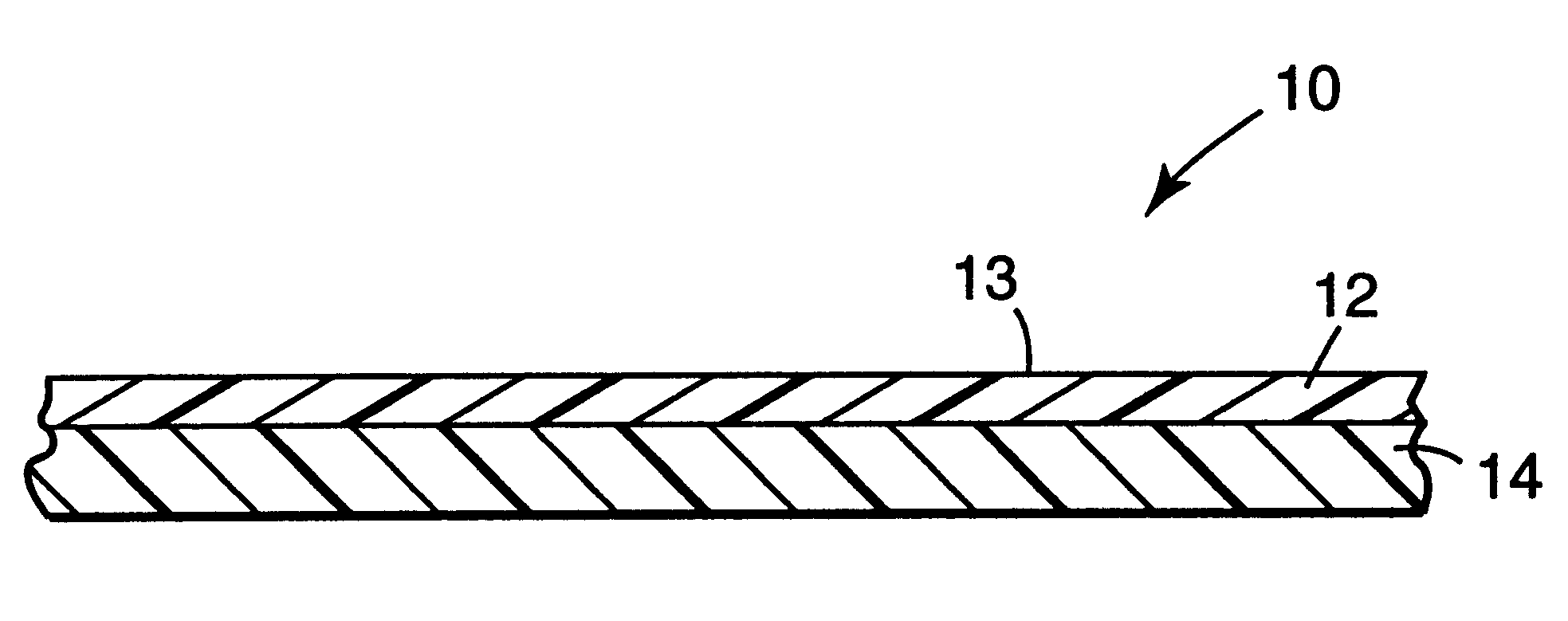Solvent inkjet ink receptive films
a technology of inkjet ink and film, applied in the direction of instruments, synthetic resin layered products, transportation and packaging, etc., can solve the problems of insufficient wetting of imaged with non-contact printing, image defects are typically, and it is not generally feasible to dilute screen printing ink
- Summary
- Abstract
- Description
- Claims
- Application Information
AI Technical Summary
Benefits of technology
Problems solved by technology
Method used
Image
Examples
examples 2 , 3 , 5
Examples 2, 3, 5, and 6 provided even higher solvent absorption than Example 1. The image receptive layers of Examples 2, 3, 5, and 6 did not exhibit any ink bleeding and the resolution of the printed images were excellent. Example 4 showed that reducing the level of the ink absorptive resin (as compared to Example 5) results in a slight bleeding of the printed image due to the reduced solvent absorption.
example 8
showed that a blend of BYNEL 3101 with an ink absorptive resin can provide sufficient solvent absorbency and good print performance.
Comparative Example C 7 showed that not all modified olefin resins can be used as the base resin in such print receptive blends, since using BYNEL 2002 instead of BYNEL 3101 (Example 1) resulted in deteriorated image quality and poor ink absorption.
The color densities of Comparative Examples C 1 and C 4 and Examples 1 and 5 were 2.00, 1.38, 1.55, and 1.72, respectively. The addition of acrylic resin to the carrier resin of Comparative Example C 4 resulted in an increase in black color density. An acceptable color density is at least about 1.5.
examples 13-21
Three layer films were produced on a blown film line substantially as described in U.S. Pat. No. 5,721,086, except corona treatment was not used. The three extruders were set at Z1=130.degree. C., Z2=Z3=200.degree. C. and the die was set at 200 .degree. C. For the image receptive layers, the modified EVA carrier resins and acrylic resins were dry blended and then fed into the extruder, except for Examples 17 and 18 for which the BYNEL 3101, ELVALOY 741, and acrylic resins were pre-compounded using a twin screw extruder, and then pelletized.
The descriptions of the blown film constructions are given in Table 4 and consist of an olefin core layer, with an adhesive prime layer on one side and an image receptive layer on the other side.
For all films below, the adhesive prime layer composition was 80 / 12 / 4 / 4 ratio of 3135B EVA / MT 5000 / ABC 5000 / UV 10407 and the adhesive prime layer was 0.5 mils (12.7 micrometers) thick.
The image receptor films described in Table 4 were printed using the Ari...
PUM
| Property | Measurement | Unit |
|---|---|---|
| weight percent | aaaaa | aaaaa |
| weight percent | aaaaa | aaaaa |
| weight percent | aaaaa | aaaaa |
Abstract
Description
Claims
Application Information
 Login to View More
Login to View More - R&D
- Intellectual Property
- Life Sciences
- Materials
- Tech Scout
- Unparalleled Data Quality
- Higher Quality Content
- 60% Fewer Hallucinations
Browse by: Latest US Patents, China's latest patents, Technical Efficacy Thesaurus, Application Domain, Technology Topic, Popular Technical Reports.
© 2025 PatSnap. All rights reserved.Legal|Privacy policy|Modern Slavery Act Transparency Statement|Sitemap|About US| Contact US: help@patsnap.com


